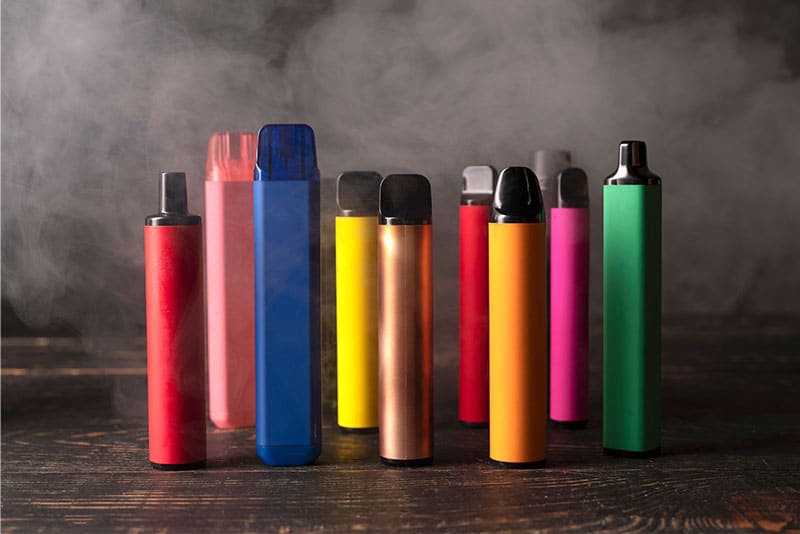The geography of nicotine consumption has evolved dramatically in recent times, expanding beyond traditional smoking to include innovative products like nicotine pouches and vapes. Both products have gained popularity as potentially less dangerous alternatives to conventional tobacco smoking, providing new ways for people with an addiction to satisfy their nicotine addiction. This comprehensive comparison examines the distinctions and parallels between nicotine sacks and vaping, focusing on their composition, operation, health impacts, social acceptance, and overall stoner experience.
What are Nicotine Sacks and Vapes?
Nicotine sacks are small, separate sachets containing nicotine, seasonings, and other constituents, designed to be placed between the gum and lip. They deliver nicotine without tobacco, making them a tobacco-free option favored by those seeking a cleaner option. Nicotine from these sacks is absorbed through the oral mucosa, furnishing a steady release of nicotine without the need for inhalation.
Vapes, also known as e-cigarettes or electronic nicotine delivery systems, function by heating a liquid( generally called e-liquid or vape juice) that contains nicotine, seasonings, and other detergents to produce an aerosol inhaled by the smoker. Vaping simulates the act of smoking but without burning tobacco, therefore avoiding numerous dangerous combustion byproducts associated with cigarettes.
Comparing operation and Convenience
Nicotine sacks offer remarkable Convenience and discretion. Since they don’t produce vapor or bank, they can be used nearly anywhere without bothering others or leaving a scent. Druggies place the poke in their mouth and replace it every 30 to 60 twinkles, making it easy to regulate nicotine input discreetly. The absence of batteries or electronic factors also means no charging or conservation is required.
Vaping, by discrepancy, requires an electronic device powered by a battery. While ultramodern vapes are movable and easy to use, they do require occasional charging and maintenance, similar to refilling liquids and replacing coils. Vapes produce visible vapor, which some appreciate for its similarity to smoking, but it can draw attention and is occasionally confined in public spaces. Despite this, numerous druggies enjoy the variety of flavors and the customizable nature of vaping bias, ranging from simple cover systems to advanced mods. vapewholesalepoint.co.uk
Health Counteraccusations and Safety Considerations
One of the most burning questions for druggies and health professionals, such as enterprises, is the safety and health impact of nicotine pouches versus vaping. Nicotine patches don’t involve inhaling chemicals into the lungs, potentially reducing the pitfalls associated with respiratory damage. As they contain no tobacco, they also avoid exposure to nicotine and numerous carcinogens present in traditional tobacco products.
Vaping is generally considered less dangerous than smoking combustible cigarettes because it eliminates combustion, which produces the formation of poisonous chemicals in the cigarette smoke. Still, vaping involves gobbling substances like nicotine, seasonings, and detergents, some of which have uncertain long-term health effects. Recent studies have indicated possible respiratory vexation and cardiovascular issues, though vaping is extensively regarded as a detriment reduction tool for smokers.
It’s important to note that both products deliver nicotine, an addictive substance with its health pitfalls, including implicit risks to cardiovascular health and reliance. Hence, while both nicotine sacks and vapes may serve as alternatives to smoking, they aren’t without threat and should be used responsibly.
Social Acceptance and Legal Regulations
Social acceptance of nicotine sacks and vaping varies across regions and demographics. Nicotine users frequently enjoy advanced social acceptance in surroundings where smoking and vaping are banned or limited because they don’t produce secondhand smoke or vapor. Their discreet operation enables them to blend in at workplaces, on public transportation, and at social gatherings without disturbing others.
Vaping, on the other hand, while getting more accepted, still faces review and regulation in numerous places. Several countries have legislated bans or restrictions on vaping in public spaces, particularly to cover youth and non-smokers from exposure to nicotine and aerosol. The visible nature of vaping also makes it more controversial in social settings.
Legal regulations for both products continue to evolve. Nicotine sacks are subject to different rules depending on their nicotine content and the country’s stance on nicotine delivery bias. Vapes are more extensively regulated, frequently involving age restrictions, packaging conditions, and limitations on flavors.
Stoner Experience and Preferences
stoner preferences frequently depend on factors such as ease of use, flavor options, nicotine delivery, and life comity. Nicotine sacks are favored by those who want a tobacco-free, bank-free, simple, and discreet way to consume nicotine without the need for electronic bias or inhalation. They give a clean oral experience with varied flavors and nicotine strengths.
Vaping appeals more to druggies who enjoy the ritualistic aspects of smoking- such as hand-to-mouth action, customizable bias, and a wide range of flavors and nicotine options, including nicotine mariners for faster immersion. The product of vapor also satisfies those who miss the sensitive cues of smoking, similar to visible exhalation.
Eventually, choosing between nicotine sacks and vapes depends on individual life, preferences, and pretensions — whether it’s quitting smoking, reducing detriment, or simply satisfying nicotine jones in the most accessible way.
Conclusion
Both nicotine sacks and vapes represent significant inventions in nicotine consumption, offering alternatives to traditional smoking that potentially reduce detriment. Nicotine sacks give discreet, tobacco-free nicotine delivery without inhalation, emphasizing simplicity and Convenience. Vaping provides a sensitive and customizable experience that mimics smoking but with reduced manures. Each comes with its health considerations, social acceptance challenges, and nonsupervisory geographies. Understanding these differences helps druggies make informed choices suited to their requirements and circumstances, always keeping in mind that minimizing nicotine use is eventually the healthiest option.
This comparison highlights the significance of continued exploration and education as these products evolve and become increasingly prominent in the nicotine demand. Druggies can profit from discussing the pros and cons of each option with healthcare professionals to address the key issues for their health and life.


